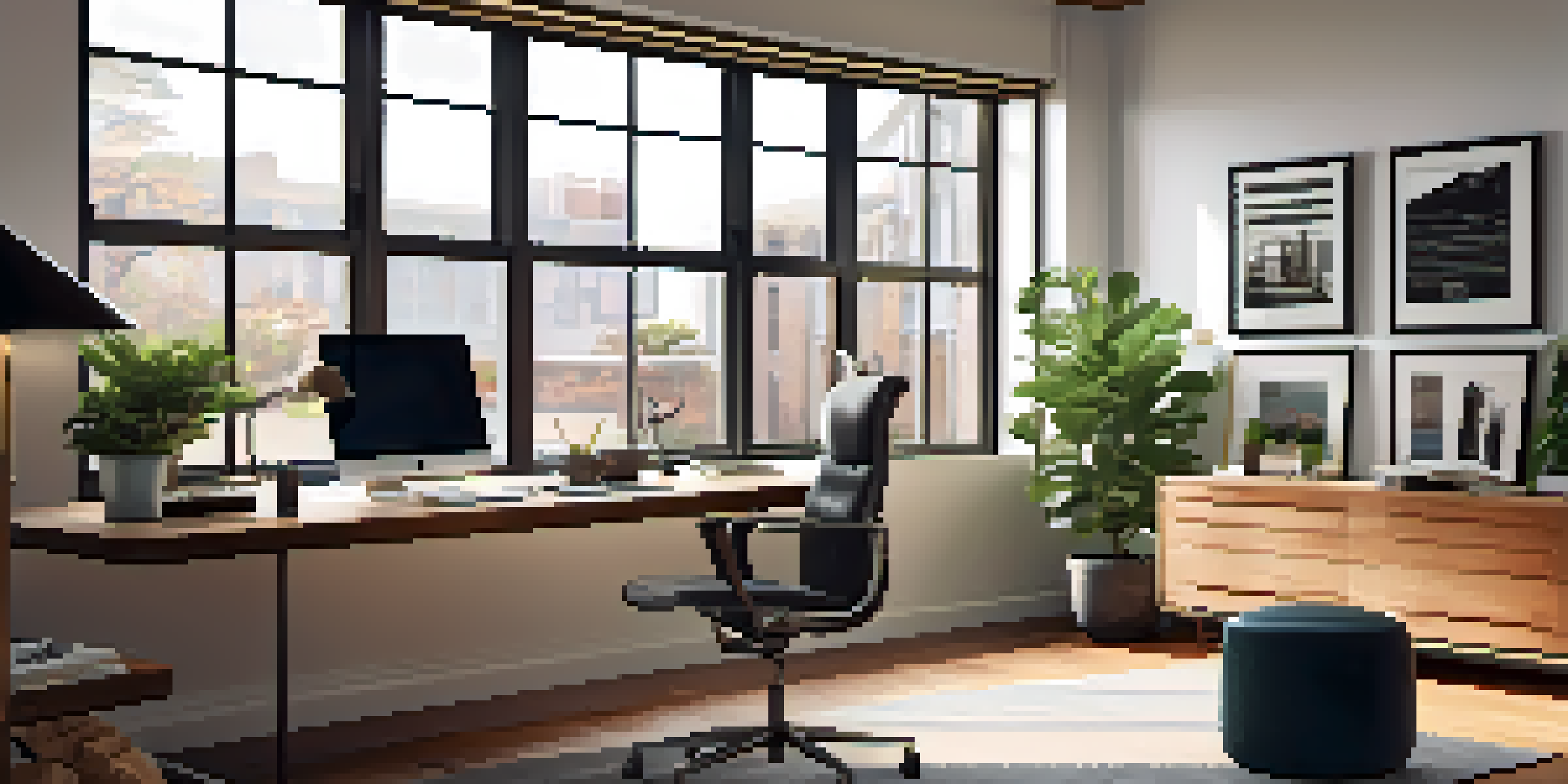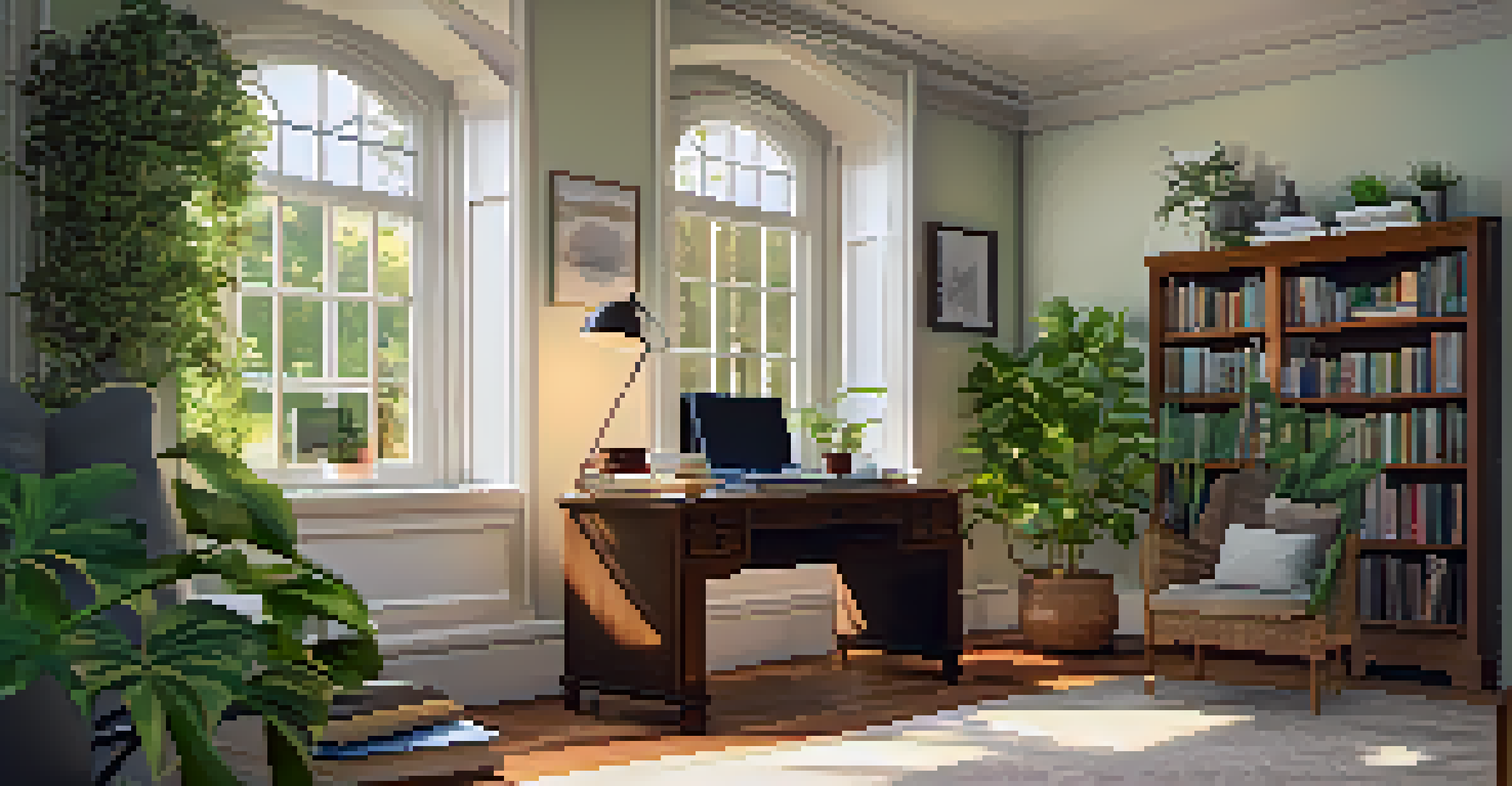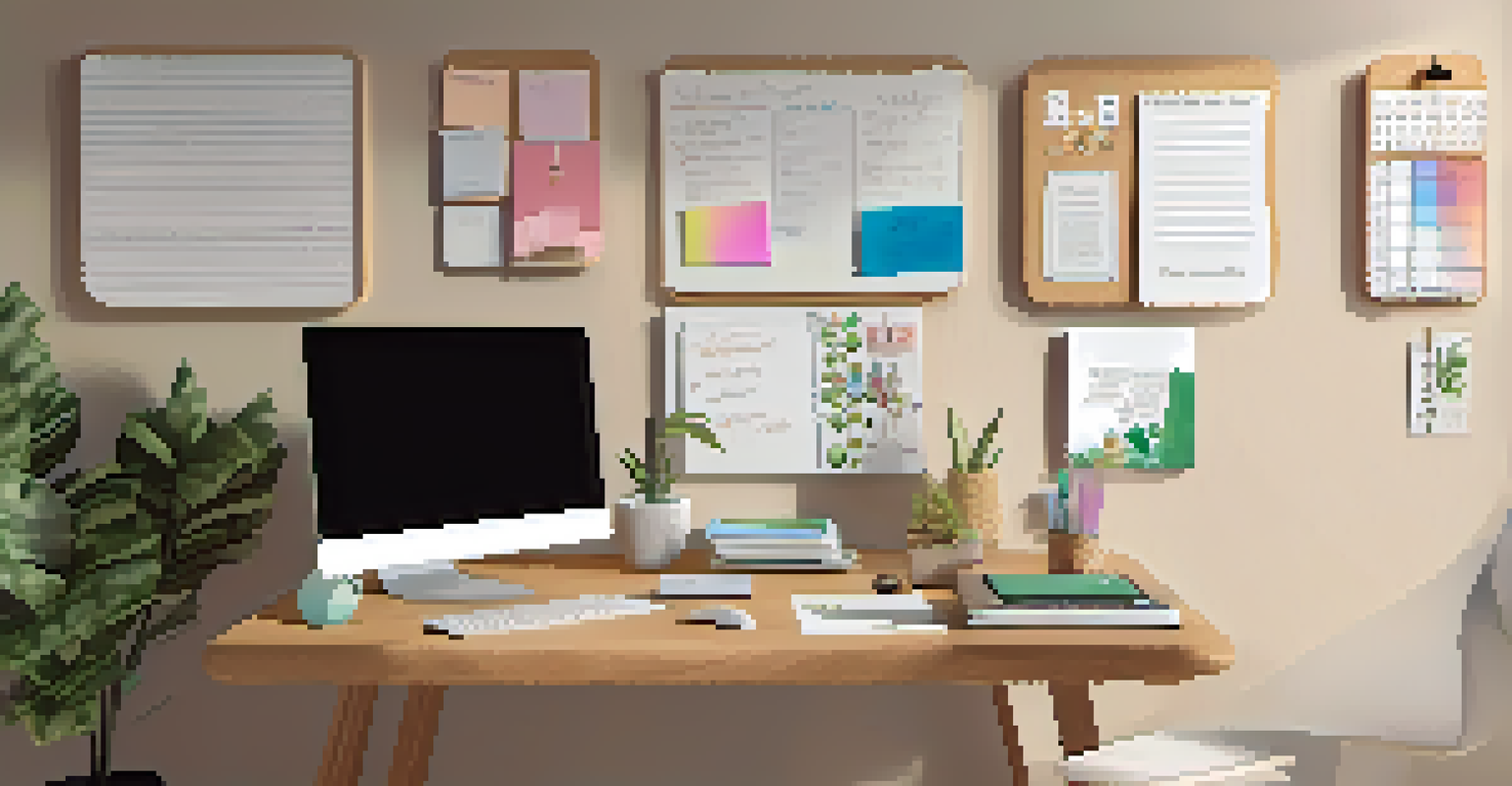Creating a Stylish and Functional Home Office Space

Understanding Your Needs: The First Step to Design
Before diving into decor and furniture, it's essential to understand your specific needs for a home office. Think about how you work best: Do you need a quiet space for deep focus, or do you thrive in a more dynamic environment? Identifying your work habits will help shape your office layout and design.
The best way to predict the future is to create it.
Consider factors such as the type of work you do, the tools and technology you need, and whether you require a space for client meetings or collaborative projects. This assessment will guide your decisions on furniture, lighting, and overall aesthetics. A well-thought-out plan sets the foundation for a functional workspace.
Lastly, don't forget to take into account your personal style. Your office should reflect who you are, making it not just a place to work but also a space that inspires you. Once you have a clear vision, you're ready to move on to the fun part: design!
Choosing the Right Location for Your Office
Location is everything when it comes to creating an effective home office. Ideally, you want a space that is quiet and free from distractions. If you have a spare room, that's perfect, but even a corner in your living room can work if you set it up right.

Consider natural light and ventilation as key factors in your location choice. A bright, airy space can boost your mood and productivity. If possible, position your desk near a window to enjoy the views and sunlight, but be mindful of glare on your computer screen.
Understand Your Office Needs
Identifying your work habits and personal style is crucial for designing a functional and inspiring home office.
Lastly, think about accessibility. Your office should be easy to get to, without the need to navigate through cluttered areas of your home. This will not only make it easier to start your workday but also help you maintain a better work-life balance.
Selecting Functional Furniture for Comfort and Style
When it comes to home office furniture, comfort meets style. Choosing a desk and chair that suit your needs is crucial for long hours of work. For example, an ergonomic chair can prevent back pain while a spacious desk provides ample room for your computer and paperwork.
Design is not just what it looks like and feels like. Design is how it works.
Don't forget about storage solutions! Incorporating shelves, filing cabinets, or even decorative boxes can help keep your workspace organized. A clutter-free environment not only looks good but also helps you stay focused and productive.
Lastly, consider the materials and colors of your furniture. Opt for pieces that resonate with your personal style while also being durable. Whether you lean towards modern minimalism or cozy rustic, the right furniture can elevate your office's aesthetic and functionality.
Lighting: Setting the Mood and Boosting Productivity
Good lighting can make or break your home office experience. Natural light is ideal, but it's essential to supplement it with adequate artificial lighting for those late-night work sessions. A combination of ambient, task, and accent lighting can create a balanced atmosphere.
Desk lamps with adjustable brightness can reduce eye strain, making it easier to focus on your tasks. Additionally, consider adding a soft overhead light to create a warm and inviting environment. The right lighting can also enhance your mood and keep your energy levels up throughout the day.
Choose the Right Location
Selecting a quiet, well-lit space that is easily accessible can greatly enhance your productivity and work-life balance.
Don't hesitate to get creative with your lighting choices. Fun pendant lights or stylish floor lamps can serve as statement pieces while providing the brightness you need. Remember, a well-lit office is not just practical; it's also an opportunity to showcase your unique style.
Incorporating Personal Touches into Your Workspace
Your home office should feel like a reflection of you. Adding personal touches like artwork, photos, or plants can make the space more inviting and enjoyable. These elements not only add character but also inspire creativity and motivation.
Consider a gallery wall with your favorite prints or a corkboard to pin inspiring quotes and images. Having these visual reminders can keep you motivated during long work hours. Plus, it's a great way to showcase your personality!
Don’t underestimate the power of greenery. Incorporating plants can improve air quality and bring a sense of calm to your workspace. Whether it’s a small succulent on your desk or a larger potted plant in the corner, they can make your office feel more alive and refreshing.
Technology: Essential Tools for a Modern Home Office
In today's digital age, the right technology can significantly enhance your home office experience. Invest in a reliable computer, high-speed internet, and any software necessary for your work. These tools are the backbone of your productivity.
Additionally, consider peripherals that can improve your workflow, such as a good quality keyboard, mouse, or a second monitor. These upgrades can make tasks easier and more efficient, allowing you to focus on what really matters.
Incorporate Personal Touches
Adding personal elements like artwork and plants to your workspace can create an inviting atmosphere that fosters creativity.
Lastly, don’t overlook the importance of organization in the digital realm. Use apps and tools that help you stay organized and manage your time effectively. From project management software to simple to-do lists, the right technology can streamline your workflow.
Maintaining Work-Life Balance in Your Home Office
One of the biggest challenges of a home office is maintaining a healthy work-life balance. Establishing boundaries is essential; make a clear distinction between work hours and personal time. This could mean setting specific working hours and communicating them to others in your home.
Creating a shutdown routine can also help you transition out of work mode. Simple practices like turning off your computer and tidying up your desk at the end of the day can signal that it's time to relax. This helps prevent work from creeping into your personal time.

Lastly, take regular breaks to recharge. Step away from your desk for a few minutes to stretch, take a walk, or grab a snack. These breaks can improve your focus and productivity, making your work hours more effective while preserving your well-being.